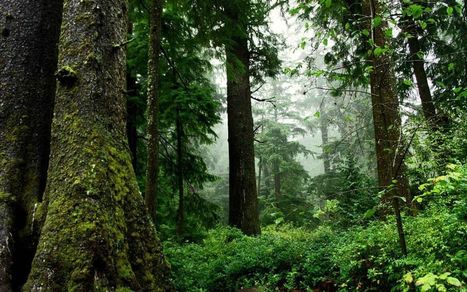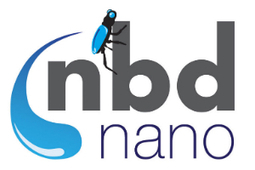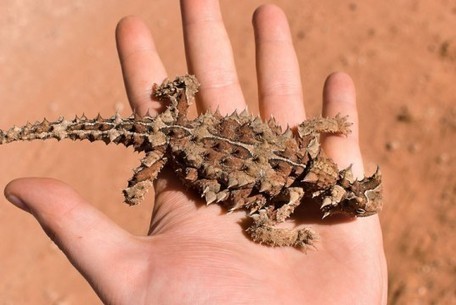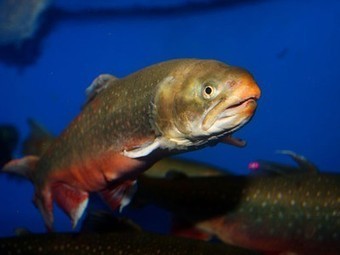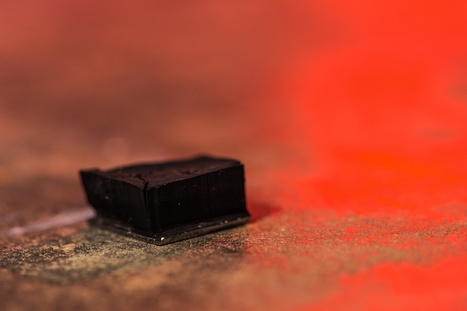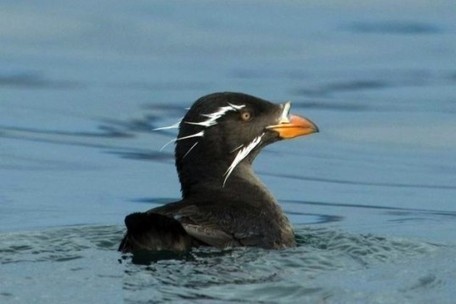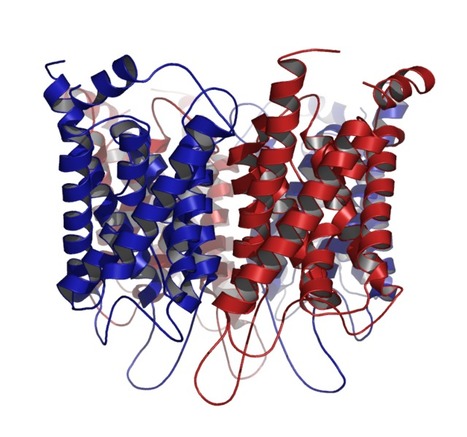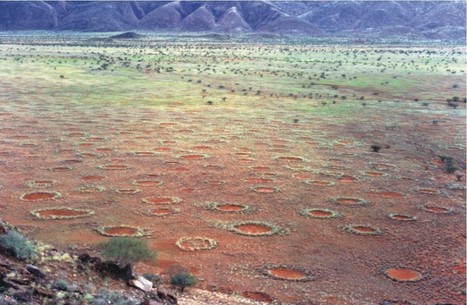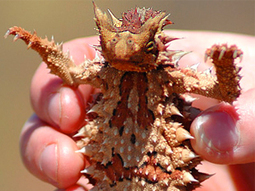 Your new post is loading...
 Your new post is loading...
"Researchers were able to make drops grow six times faster than normal by copying the insects' shell geometry. Combined with other plant techniques, the team created drops that grew larger as temperatures increased.Scientists have drawn inspiration from the bumpy shells of Namib desert beetles to improve the collection and transport of water droplets."
"Have you ever walked through an evergreen forest in the rain? There is a hush all around. The forest floor is spongy and soft beneath your feet, and the layers and textures all around you create a coziness, a feeling of being protected. As you take a deep breath of fresh, clean air, you know it’s raining big drops up above, but all you feel is a cool mist floating down through the canopy.
You can find expansive sections of this forest all around Puget Sound. For many people, it is a mental and spiritual health reservoir, a place that helps us reconnect and remember that we are nature. But it is also an ecosystem services powerhouse. It stores carbon, cleans the air and water, regulates temperatures, and provides shelter and food for critters big and small."
"Plants and certain animals like the fog beetle can survive in very arid regions because they’ve developed ways of absorbing minute amounts of water from the atmosphere. Learning from their example allowed us to develop fog harvesting technologies—basically giant nets that trap moisture in the foggy mist, and funnel all of the tiny droplets into a container where they add up to water we can drink. In 2013, scientists at MIT created an advanced fog harvesting material that enables these giant mist catchers to generate five times more water."
"San Jose-based zNano is getting attention for what could be a breakthrough technology designed to recover clean water from sludge. [...] The company draws on a process called biomimetic filtration. This process is the subject a growing body of research. "Biomimetic filters, according to Susan Rempe, a principal researcher in the nanobiology department at Sandia National Laboratories in New Mexico, mimic the structure of naturally filtering cellular water membranes," theBusiness Journalreport said. Rempe said the membranes are “exactly the same chemically as those that purify water in the human body, [and which are one of the most efficient purification systems]," the report said."
"Technology inspired by the exoskeleton of a hardy desert bug is being aimed at big industrial problems, and investors are betting several million dollars that it could make a difference."
"If you have ever sat in the bath and wondered why your fingers go wrinkly when wet, it is because the dead outer layer of your skin is made up of matrix-like structures called corneocytes. They let the skin absorb water easily when wet, yet quickly become much less permeable to moisture when conditions are dry. Physicists in Germany have now modelled a corneocyte and carried out calculations to see how its volume changes as it takes up water. As well as providing important information about how our skin reacts to its surroundings, the new work could help researchers to develop new materials, such as fabrics, that mimic the properties of skin."
"One of Australia’s more bizarre creatures is the thorny devil or dragon, also known as the moloch. The devil is named for the ancient god Moloch, a hideous demon smeared with the blood of child sacrifice, but in reality, she is five inches long and lives entirely on ants. The thorny devil is, of course, covered in fearsome thorns, presumably to warn off would-be predators, but the spiky scales also serve another ingenious function. They form an incredibly efficient water harvesting system. What can the thorny devil teach us about water management in our own increasingly parched world?"
"[...] MacCowan, a PhD candidate at Leeds Metropolitan University in the United Kingdom, began applying biomimicry – looking to and emulating nature for solutions – to a flood-prone project near Leeds, England. By combining strategies of plants and animals from different parts of the globe as a system, this “eco-industrial park” will benefit from the genius of the Elephant Foot plant, European Water Vole and Giraffe to capture, store and distribute excess volumes of stormwater."
"Montana’s Whitebark pine trees look as if they were beaten down by the unforgiving conditions of the mountain environment they live in. And yet, they’ve inspired a water bottle design in Portugal."
The biomimetic design could increase water delivery efficiency, decrease water-borne illness, and lower wastewater operating costs.
The Chaac Ha rainwater harvesting concept was the winner of the Autodesk Sustainability Workshop Award for the 2012-2013 Biomimicry Student Design Challenge. It is a simple, elegant, and locally appropriate solution to rainwater collection. The team used AutoCAD and 3ds Max to visualize their design.
When WDR talked to Peter Holme Jensen, the CEO of Danish-based Aquaporin A/S, earlier this year, the company had just completed the successful testing of Aquaporin Inside™ membranes at NASA’s Ames Research Center. Based on the results, as well as the work being done with other test partners, Holme Jensen said that the company is now moving forward with plans to invest in a membrane manufacturing facility to produce commercial quantities of membranes by the end of 2013. “We are planning the move out of the laboratory and into full-scale use,” he said. “Our ABMs [Aquaporin-based Biomimetic Membrane] will consist of a polymeric support layer with aquaporins incorporated in a thin-film membrane coating. Although the production procedures for RO and FO [forward osmosis] membranes are the same, we expect the FO version to be available first.”
The onymacris unguicularis is a beetle found in the Namibian desert and has the most unique way of procuring water. Early in the morning, when the dew enriched fog is settled over the dunes, the beetle goes to the peak and positions its body in such a way that it helps in dew formation, and slurps up the water thus formed. Using this technique is the Dew Bank Bottle. It’s made is such a way that the steel body helps to assimilate the morning dew and channel it into the bottle immediately. Ideal for the nomads in the desert! Be sure to watch the BBC clip at the end of the post, which explains this ingenious tactic.
|
"Water Factory imitates the catchment method used by the Namib desert beetle. The transparent plastic film in the upper part of the water factory has two different types of hydrophilic textures on its surface to increase the contact area between the air and the film. With the combination of two types of textures and air convection generated by a solar fan, moisture in the air condenses into drops at the convex hydrophilic endpoint and is finally gathered in the inner and outer walls of water collectors through hydrophobic groove."
"Scientists have unpicked how the skin of the Texas horned lizard funnels water towards its mouth - and copied the principles in a plastic version. This reptile can collect water from anywhere, including the sand it walks on; the fluid then travels to its mouth through channels between its scales. A German-Austrian team quantified the skin's key features, notably the way its grooves narrow towards the snout. The bio-inspired plastic copy could have some engineering applications. Writing in the Journal of the Royal Society Interface, the researchers suggest that the "passive, directional liquid transport" they have described might find a home in distilleries, heat exchangers, or small medical devices where condensation is a problem."
"The Idea: Collect water from fog in deserts and other regions where water is scarce using a method borrowed from birds. Researchers at the University of Texas at Arlington observed shorebirds such as phalaropes opening and closing their beaks in order to move water towards their mouths. The unusual drinking method inspired the researchers to create a beak-like fog collector. Composed of two plates joined at one end by a hinge, the collector accumulates water droplets on the inner surfaces of its “beak” while in the open position. Closing the “beak” merges tiny droplets into larger drops, which are able to roll towards the collection tube located near the hinge."
"Fresh drinking water isn't a supply problem, but I do believe there is an important supply solution. This solution, desalination of seawater, in the future could be improved by techniques observed in nature. Here, I write about some notable examples in both the technological and natural world. [...] From versatile fish to salt-sequestering plants, the natural world abounds with ways to turn sea water into freshwater."
"Researchers in the lab of Rice materials scientist Pulickel Ajayan found a way to mimic the Stenocara beetle, which survives in the desert by stretching its wings to capture and drink water molecules from the early morning fog. They modified carbon nanotube forests grown through a process created at Rice, giving the nanotubes a superhydrophobic (water-repelling) bottom and a hydrophilic (water loving) top. The forest attracts water molecules from the air and, because the sides are naturally hydrophobic, traps them inside."
A billion people don't have enough drinking water. Desalinating oceans is economically and environmentally expensive. Biomimicry looks at how nature does it.
"In some of this planet’s driest regions, where rainfall is rare or even nonexistent, a few specialized plants and insects have devised ingenious strategies to provide themselves with the water necessary for life: They pull it right out of the air, from fog that drifts in from warm oceans nearby. Now researchers at MIT, working in collaboration with colleagues in Chile, are seeking to mimic that trick on a much larger scale, potentially supplying significant quantities of clean, potable water in places where there are few alternatives."
"A research institute at Singapore' s Nanyang Technological University is expected to invest 132 million Singapore dollars (107 million U.S. dollars) in researches in clean water technologies in the coming three years, including the biomimetic filter research that aims to copy the kidney in water treatment." Photo details: Sideview of Aquaporin 1 Channel, PDB ID, 1J4N generated by PyMOL. GNU free document license. 2009, Vossman. http://commons.wikimedia.org/wiki/File:Aquaporin-Sideview.png
"The Namib Desert is dotted with thousands of mysterious “fairy circles,” which are near-perfect circles of barren soil two to fifteen meters wide, rimmed by tall grass. They are unmistakable and stretch for miles, giving the landscape an ethereal and otherworldly feel. Many possible explanations have been proposed, including toxic substances in the soil, meteorites, termites, UFOs, and the ghosts of dead natives. But the circles are extremely remote—more than 110 miles from the nearest village—and have been difficult to study scientifically. Despite decades of research, the cause of these bizarre circles has remained elusive. But now, after a six-year study and more than 40 trips to the Namib Desert, Dr. Norbert Juergens believes he has come to understand the biological underpinnings of this strange phenomenon. According to Juergens, a single species of termites is responsible for creating and maintaining the circles. But the barren circles aren't just a byproduct of these tiny insects living below the sandy desert surface; they are part of a carefully cultivated landscape that helps the termites—and many other organisms—thrive in an otherwise inhospitable climate."
Water is the source of life. However, with the boost of the global population and the sharp increase of the industrial water consumption, water resource is getting into crisis in the world wide. Therefore, the problem of water crisis has to be tackled urgently.
"Within our bodies and our societies we use water as a solvent, transporter, heat conductor, coolant, buffer, lubricant and structural component. Adapting to a new conservation-based prosperity will mean figuring out ways to make water work more efficiently. Adapting is something that nature does very well, and because organisms have occurred in water for billions of years, there are many examples of clever tactics."
From New York City-based architects HWKN’s Matthias Hollwich and Marc Kushner comes Skygrove: a one million-square-foot design concept for a commercial office building that operates in a wetter world. [...] The Skygrove concept was created to visualize what architecture might look like in an era of rising seas, not only to protect tenants from their implications but to “capitalize on their potential.” Skygrove’s architecture is, of course, biophilic: its lower floors mimic the roots of a tree growing in a tidal location. Each floor in Skygrove is self-sufficient and “designed for independent survival in a maximum disaster,” connected by a compartmentalized facade with the tower’s necessary infrastructure: vertical circulation, water, energy, and air supply.
|
 Your new post is loading...
Your new post is loading...
 Your new post is loading...
Your new post is loading...








